June 2022 - You are accessing an old version of our website. The SDGs Voluntary Commitments have been migrated here: https://sdgs.un.org/partnerships
You will be redirected to the new Partnership Platform in 10 seconds.
June 2022 - You are accessing an old version of our website. The SDGs Voluntary Commitments have been migrated here: https://sdgs.un.org/partnerships
You will be redirected to the new Partnership Platform in 10 seconds.
In the alignment exercise directed by the National Commission on Sustainable Development Objectives to the 79 targets of 17 SDG, Embrapa`s Executive Board encouraged all Units and employees to "without leaving anyone behind" to produce a document that would show the role of Embrapa to comply with Agenda 2030. The Good Practices of Collaborative Publication, SDG Collection, was launched six months later in the company's 45th anniversary, a set of 18 e-books, with 1,408 pages, by 308 authors and 70 publishers, researchers and analysts from all Embrapa Units.
The SDG Collection is an effort to foster company`s accountability to the society and partners, enhancing new partnerships to implement the SDG in Embrapa and contributing to sustainable development of the country. The launching of the SDG Collection enables this internal and external dissemination, according to the outreach perspective of 79 goals from 17 SDG.
Also verify that 60% of these 79 goals are related to the dimensions Planet (34%) and People (26%), coming from 10 of the SDG. The remaining 40%, in which Embrapa provides contributions, are related to the Partnership, Prosperity and Peace dimensions, coming from 7 SDG.
Although the contributions are distributed in the 18 e-books, the writing evidences the interrelation between the SDG, significant learning for the Editors and Authors.
The SDG Collection is still effective in initiating the internalization and interiorization of SDG in the company, providing information: mapping and integration of public policies, good management practices, knowledge, technological solutions, and the competencies involved.
The difficulties related to the period were overcome by the motivation and challenges were achieved with the perspective of continuous training of high performance team distributed in all 47 Units to size the efforts for internalization and interiorization of the same focused on their respective missions, respecting the rhythm of natural and necessary institutional changes intrinsic to constant institutional innovation, aligning the managerial systems of research and innovation to the SDG, thus assigning, greater effectiveness and possibility of monitoring on the achievement of SDG goals with perspective of collaborative elaboration of a second enlarged edition of the Collection SDG to demonstrate the effective contributions of the company to the reach of Agenda 2030.
After all, the co-creation process has simultaneously made it possible to sensitize, to exchange knowledge, to virtually bring geographically distributed intelligence and to create specialized intellectual capital over the SDG.
Embrapa and Brazilian Society: to understand the role of Embrapa for Brazil and for the Planet; develop internal competencies with a vision to establish additional cooperations related to SDG themes, such as Map and IBGE -Agro + Mulher (SDG 5) partnership. Agricultural research: highlights the importance for the sustainable development of Brazil; Implementers - presents itself as a reference institution to deal with rural issues, in addition to agricultural production. World: in simple language, analyzing how the contributions of Embrapa can be adapted in other parts of the world.
The Executive Board appointed an internal working group (SDG Embrapa WG) that determined the creation of the Embrapa SDG Network with the objective of encouraging the engagement of researchers and analysts from all 47 Units in the preparation of a publication containing the company's contributions on the 29 goals of the 17 selected SDG, promoting a reflection on the role of Embrapa in this context and increasing the visibility of technologies in the celebration of its 45 years.
Embrapa's PGMacro method (Hammes, Arzabe, 2016) was used, under the leadership of a facilitator, to structure the involvement of the entire internal community in a collaborative work replicable in any other organization. The editors and authors structured an e-books index composed of a first chapter on the contextualized contextualization of the company within each SDG; a second chapter with the set of problems that the company could be part of the solutions; and the structuring of the chapters for collecting contributions for the resolution of each of the 79 objectives selected, although some have been consolidated in the same chapter, as well as a final chapter on future challenges. A virtual platform was created to organize, register the multilevel team with editors and technical authors and serve as a repository of the work performed. The technical editors structured the content of the goal chapters based on the questions about the problems and solutions developed by the company that contributed to the fulfillment of each selected objective, and whose answers allowed to identify the experts and authors who acted as content.
The debate required for co-creation was made possible by the advancement of information technologies (video conferencing, Skype, whatasapp and e-mails). All actions were structured and agreed in 17 videoconferences, in a total of 34 hours. A workshop was held with a 20-hour workload and the participation of 24 researchers and analysts, all involved in organizing the SDG Collection to consolidate the material available in volume 18.
The SDG Collection went through many adjustments due to the large number of authors, preventing the correct accounting of the downloads, which compensated the system with each interruption. In total, we have 6,745 downloads, from 24.04.18 to 11.02.19.
The difficulty of accessing the Epub format justified the Publishing and Publishing Sector to produce the SDG Collection in pdf format for printing in July 2018.
Co-creation performance was assessed by the following PGMacro indicators: • Efficiency in engaging 10% of the target audience - approximately 400 researchers and analysts; Efficiency in co-creation agility - response time - 6 months; and Effectiveness in the production of the agreed results - potential of effective contribution to 79 goals of 17 SDG, with solutions available in the link https://www.embrapa.br/solucoes-tecnologicas?link=acesso-rapido: products, processes, services, methodologies, agricultural practices and production systems
The co-creation of the SDG Collection occurs through videoconference agreements with editors and authors and subsequent approval by the reviewers of the Publications Committee at Headquarters. The Embrapa’s high level board approved its launch with the creation of a portal and the installation of totems in 45 years of celebration at the headquarters and in the National Congress. Several portals related to SDG in Brazil, implementing institutions, announce the SDG Collection.In the co-creation work, more than 600 contributions were identified in the internal search bases (https://www.embrapa.br/solucoes-tecnologicas?link=acesso-rapido) of the six types of results indicated below: 1) Support the formulation or execution of public policies; 2) Advancement of knowledge; 3) Technological solutions; 4) Institutional development; 5) Strategic training of employees, trainees and multiplier agents; and 6) Maintenance of biodiversity.
The validation of the SDG Collection by Brazilian society on the importance of Embrapa, from agricultural research to sustainable development in Brazil, highlighting the agricultural sector and rural reality for Brazil is given by the competent bodies, such as the Ministry of Agriculture, investing in a English version and the participation of nationalization of Brazilian targets at the invitation of SDG implementers, such as implementing institutions. In addition to the establishment of innovative partnerships with UNDESA-UN / OCB / Mapa (SDG 1, 2 and 10) to organize the International Cooperative Workshop and SDG and the launch of public policy by the Ministry of Agriculture known as an Agro + Woman in 2018 (SDG 5 ).
The SDG Collection has been contributing to institutional sustainability, which has evidenced the company's alignment with the SDG, with the expectation of influencing strategic planning, search systems and establishing multilevel goals and indicators as part of the formation of SDG's high performance team, involving employees and partners in its implementation and monitoring of the increasingly effective service of the 79 goals. In addition to expanding our partnerships to other stakeholders, such as private initiative and public policy institutions and stimulate social entrepreneurship. It is hoped that in 2022, 2026 and 2030 we could elaborate the second, third and fourth editions of the SDG Collection, demonstrating our contribution to "Transforming our world: the 2030 Agenda for Sustainable Development."
The success was due to the stimulus of the federal government and the support of the High Executive Board, besides the installed capacity of researchers and analysts with diversified competences. The collaborative elaboration cost R $ 24,000 to enable the workshop for the elaboration of the 18th e-book, which included a technical editor of each of the 17 SDG e-books. All the work counted on the intellectual capital installed and motivated by the challenge of Agenda 2030. The main restrictions were: 1) Short time - 6 months to prepare, revise and publish 18 e-books; 2) In the same period, the restructuring of the company, the Christmas period, the new year and the holidays of the employees took place - the motivation was evidenced by the commitment to deliver the results and agreed terms; and 3) the coordinating team is very small - two people, one to articulate, define, agree and guide the whole process and another to support the virtual platform and monitor the indicators. These restrictions were overcome by the motivated, active team and connected by the available resources of information technologies. Undoubtedly, in addition to formal support, the training of facilitators has been and continues to be the main operational strategy to ensure the continuity of the co-creation process of publication provided in the Embrapa SDG Network. Undoubtedly, the SDG 18-eBook Collection proved to be an innovative resource for mobilizing the installed capacity of the science and technology area, usually already motivated to publish, but resistant to unfamiliar and fast interactions. The coordination and co-ordination of the process transformed this resilient team, from the credit point of view, to the co-creative process proposed by the SDG Embrapa Network, since, apart from the temporal lapses, it is willing to reorganize itself into other groupings (Learning Communities and Thematic) to respond quickly to interesting and challenging demands, considered important by Publishers and Authors who voluntarily engage. Undoubtedly, transparency and built trust is the foundation of this collaboration.
The National Commission on Sustainable Development Objectives (CNSDG) recommends the UN methodology for the implementation of Agenda 2030:1) Negotiation with the countries;2) Leveling and Multilevel Alignment of Government / Private Institutions / Civil Society;3) Internalization of goals, indicators and public policies;4) Interiorization of partners and reformatting of deliveries to society with "SDG Effect", contributing to the various SDG, according to their competence Embrapa uses PGMacro to collaboratively replicate this same sequence as a way to internalize and internalize the SDG: negotiate with high level board ; level and align SDG at all managerial levels and with all sectors; to develop in a collaborative way the mapping of the public policies for which we can contribute effectively and to define goals and indicators "contributors", resizing the voluntary effort of each Unit; and finally it is hoped to involve the partners in internationalization, so that they establish lasting bonds of cooperation. In this context, the Good Practice Collection SDG is replicable. The improvement of a team of high performance facilitators is the main strategy to give autonomy and continuity to the implementation of the SDG, which presupposes the internalisation in the institutional systems and interiorization of the deliveries to the society, with the strengthening of intra and interinstitutional partnerships, support to the macroprocess of production , in the case of Embrapa, research, development, innovation and business results, inputs to the co-creation of the second, third and fourth editions of the SDG Collection as a way of monitoring the implementation of SDG at Embrapa by 2030. The environmental impact is expected to be positive as evidenced by the institutional alignment of SDG goals and indicators and the risk eliminated through the use of mobile phones, computers and video conferencing equipment The reduced cost is a requirement of economic sustainability: 1) virtual co-creation with annual or maximum semiannual meetings to train and update the facilitators; 2) digital production of e-books (Epub and pdf for print); 3) partnerships for translation and printing. The highlight is institutional contributions to environmental improvement.Co-creation has a very positive influence on the internal social aspects by promoting the exchange of knowledge and practices among researchers and analysts of the 47 Units with a focus on producing a publishable result, also attributes recognition and contributes to improve internal customer satisfaction .As for organizational resilience, the formation of a team of high performance facilitators, so called by the breadth and transversality of the SDG, is the main strategy to give autonomy and continuity to the implementation of the SDG, creating a support EAD course and forming intra and interinstitutional partnerships necessary for institutional sustainability and elaboration of one or more editions of the SDG Collection by co-creation by 2030.The SDG Good Practice Collection is a way to disseminate and encourage other companies to adopt the co-creative process of accountability for society and the world about their contribution to reaching Agenda 2030.
The SDG Collection is a replicable good collaborative networking practice for any other organization to quickly access and organize the company's collective intelligence and give a quick response.In the case of Embrapa, the first question was who among more than two thousand researchers of 47 Units (of product, services, eco-regional in all biomes) distributed throughout the national territory with continental dimensions could respond promptly to SDG. The quality of the co-creation result was proportional to the motivational commitment that is not always related to the academic formation, since the SDG themes are transversal. Hence, volunteering can be an interesting strategy, so that through the production of quick results respond to governmental demands and still contribute to the internalization and interiorization of the Sustainable Development Objectives (SDG) fostering intra- and inter-institutional partnerships.The relevance of this work was the promotion and sharing of knowledge that enabled the survey of approximately 600 contributions validating the alignment to 79 goals of all 17 SDG, through strong communication between peers, in a virtual way, via Network and videoconferences, and in a way workshop, stimulating employee participation, in a process of meaningful learning for all involved. The collection also organizes strategic information on Embrapa's actions related to public policies aligned with the SDG, in an integrated way, serving as auxiliary material to monitor the company's goals for Agenda 2030. Another relevant aspect of the collection was the visibility given to the the role of Embrapa, from agricultural research and innovation to implementing institutions that do not always dominate the problems of rural reality. If we consider that 70% of the world's poor are in rural areas, Embrapa can participate in forums that contribute to sustainable development and the possibility of influencing and interacting with other sectors, in addition to the agricultural sector.
All e-books can be acessed in https://www.embrapa.br/en/45-anos/publicacoes



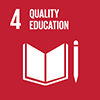
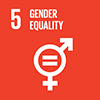
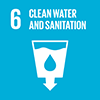
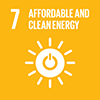

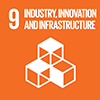
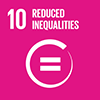



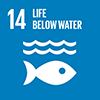

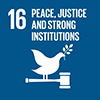
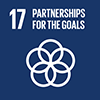
 Start: 01 September, 2017
Start: 01 September, 2017 Completion: 26 February, 2019
Completion: 26 February, 2019